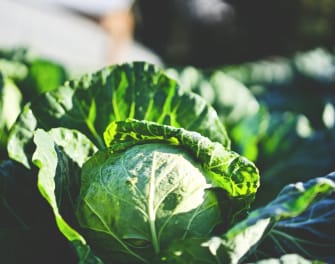The answer to the question: “When should I pick my vegetables?” is more simple than you think. The first thing to do is to switch your thinking from a grocery store customer to a vegetable gardener.

When should you pick your vegetables?
The answer to the question: “When should I pick my vegetables?” is more simple than you think. The first thing to do is to switch your thinking from a grocery store customer to a vegetable gardener.
When commercial growers sell to large grocery stores, they distribute in large quantities so the customer can’t choose exactly when to consume the product. Almost always, these fruits and vegetables are picked when they are underripe. This accounts for transit and distribution time so the customer can see the fruit or vegetable ripen on their kitchen counter.
However, backyard growers like you have much more control over when is the right time to harvest. If you are choosing to wait until peak ripeness, it’s always best to let the fruit or vegetable ripen on the vine, NOT your kitchen. This way you get the sweetest and juiciest goodness Mother Nature has to offer.
What time of day to harvest?
Most experts agree the morning is best just after the morning dew evaporates. The thought is that before the heat of the day the plant has absorbed moisture and nutrients in the overnight hours. Picking plants in the late afternoon might not be as juicy because the sun has been robbing it of moisture all day. Also, sweeter vegetables utilize nighttime hours to make sugars from the starches they have produced during the day.
Let's discuss some actual vegetable varieties.
Tomatoes
Tomatoes can be fun to grow because they come in different varieties and can be eaten just about any time although it takes about 80 days for tomatoes to be fully mature. For example, if you have a fried green tomato recipe you love, pick your tomatoes early!
Naturally, tomatoes will turn from an orange color to red. Vibrant colors mean good health while mush or crusty should be avoided. Visual inspection is your first clue on when to pick. Next, gently squeeze and evaluate. It shouldn't be too hard, nor too soft. It’s really difficult to explain in an article, but you’ll get the hang of it. If you're still not sure, just pick one and have a taste before you move forward.
When you decide to harvest, use a pruning tool or scissors to cut the stem an inch before the tomato.
Zucchini
If you planted your zucchini the same time as your other vegetables, you might be seeing this plant mature before the rest in about 45-55 days. Zucchini is exciting to grow because once it starts producing it can be amazingly productive.
If you forgot to plant Zucchini, there is still time! Even in August there’s still time for a fall harvest. I recommend picking zucchini days apart. Some people prefer the taste of the zucchini before they grow too big. Experiment with different sizes and see what you prefer for next season.
Carrots
Carrots can be hard to judge mostly because the time to maturity can vary widely. For example, baby carrots usually are ready in 50-60 days, but mature carrots need about 75 days. It may be worth the trouble to remind yourself what variety you planted.
Because carrots grow underground and are relatively well preserved, I suggest only picking what you may use in a 2 week period. You can come back for the others later. When picking, grab the foliage near the top of the carrot. Before you start pulling, loosen the soil around it with a garden fork or your hand. This ensures the carrot comes out of the ground entact.
Lettuce
Harvest the outer leaves once the plant has reached about 4 inches in height. Allow the younger, inner leaves to grow. Leaf lettuce can be harvested in this fashion for most of the summer.
Cucumber
Cucumbers race to the harvest with zucchini. Check daily and harvest young. Timing and length will vary with variety. The cucumbers should be firm and smooth. Overripe cucumbers can be very bitter or pithy, even before they start to turn yellow.
Peas
When picking peas, wait for the pods to be full with a swollen appearance. It could be as early as 55 days from planting, but to be sure, test a couple of pods. When you are getting close to picking, check the peas daily because it doesn't take them long to go from tender to tough. Here's a bonus tip: Most people don't realize is that the pods themselves are edible, but I suggest if you want to try them, don't wait until the pods are fully mature.
Hope you’re having as much fun as we are at Decker's Nursery! My next article is going to be what you have been waiting for. Our delicious recipes of course!
